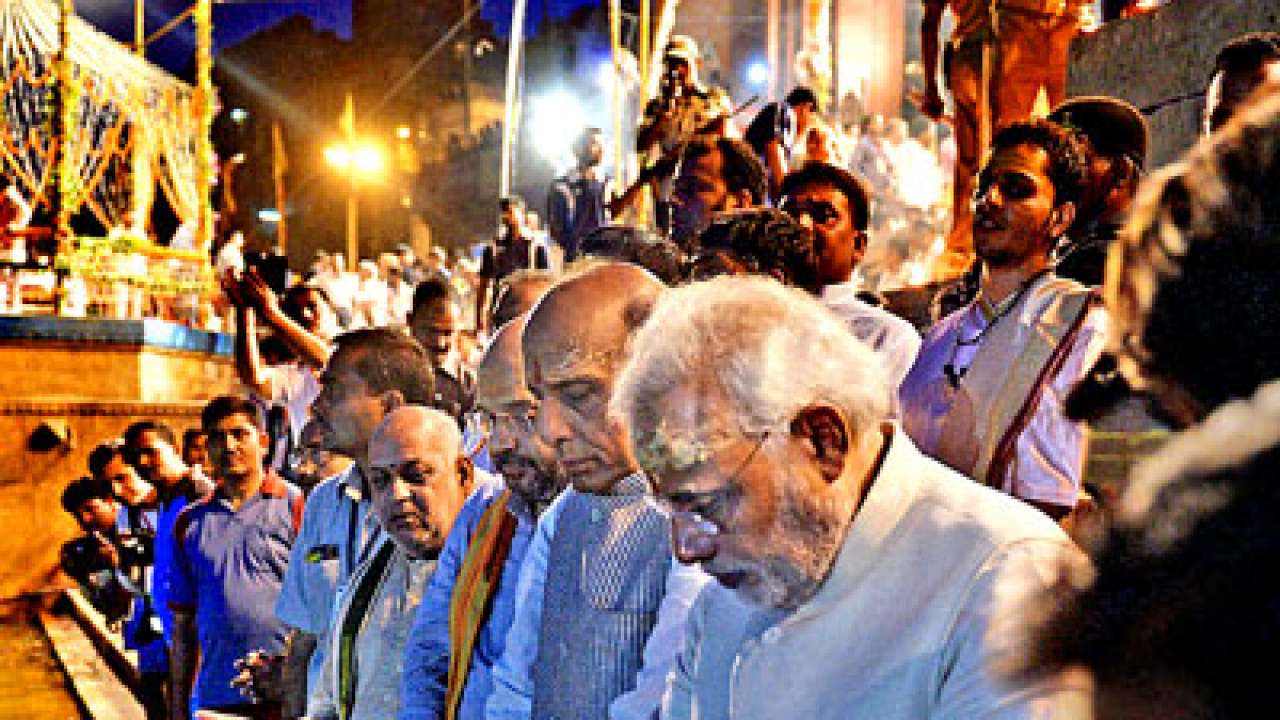
Prof BD Tripathi, co-ordinator of the Centre for Environment Science & Technology at the Banaras Hindu University, is one of the pioneers of scientific research into Ganga water pollution. A non-official member of the National Ganga River Basin Authority (NGRBA), he has been associated with initiatives to clean the river since 1980 and has seen up close how the efforts have been bungled by poor management, lack of political will, corruption and lack of scientific understanding of river problems. But with Narendra Modi as prime minister, especially aftet his winning elections from Varanasi, he's hopeful about Ganga again, he tells dna.
Q: Starting from 1986, there have been three large central plans to clean up the Ganga -- the Ganga Action Plans I & II and now the NGRBA. The government has spent close to Rs 20,000 crore on them. Why have they all failed? Why is the river still so polluted?
A: The main problem with Ganga is not pollution – it's that both the flow of the river and the quantity of water have gone down. This has led to siltation and the depth of the river has decreased. Encroachment along the riverbed has constricted the river, so in many places, it's not a river but a pond. This has reduced the river's self-purifying capacity. So even if there was less pollution in the river, it will not improve water quality.
I conducted a water analysis for BOD (Biochemical Oxygen Demand) on the Ganga during Kumbh Mela last year. Ten crore people dipped in the Ganga at Allahabad and they should have driven the BOD levels up, normally in the range of 3 mg/l to 20-25 mg/l. But we found that the levels increased only to 7-8 mg/l. This was because, for once, the Centre decided to increase the river flow, by directing water from Tehri dam. If you increase the flow, automatically, Ganga will be 80-90% pollution-free.
Q: So why is so little water flowing downstream now?
A: Because of the dams that have been built in Uttarakhand on the Alakananda, Bhagirathi and Mandakini rivers. This is a political issue, related to the states' power requirement. But why build dams on the main channels of the rivers? You can have smaller power plants on the tributaries.
Midstream, too, water is being diverted for drinking and irrigation. Groundwater is being extracted all along the Ganga basin. There is urgent need to implement rainwater harvesting and groundwater recharge.
Q: Clearly states with different political dispensations and different concerns do not care about conserving Ganga...
A: The law says states have authority over rivers which flow through them. Five states now have control over Ganga. It's time we had a law that gives the Centre control over the river. After all, it contributes 85% the finances to managing the river.
Q: Under Ganga Action Plans I & II and NGRBA, a number of sewage treatment plants (STPs) came up all along the river midstream. Why does the river still continue to be a cesspool?
A: STPs were built at a cost of Rs 40-50 crore each. They were based on foreign technology and equipped only to treat sewage. But a lot of cottage industries in Kanpur, Varanasi and Allahabad empty their industrial wastes into the sewer lines. The STPs are not equipped to handle this and the treated water continues to flow into the river with heavy metals like cadmium and chromium.
Q: Have IITs submitted comprehensive river basin management plans they were asked to prepare?
A: Not yet.
Q: What is the principal problem with cleaning up the river? Is it lack of political will?
A: The Ganga was declared a national river in 2009, but there has been no policy and no proper planning. There is no monitoring of plans, with mismanagement compounding the problems created by faulty planning. Our politicians just don't seem to be serious.
One of the good things the NGRBA did was to facilitate co-ordination between the Centre, state and local bodies of the five states. Each state would have its own Ganga Conservation Authority and municipal corporations would also be members. But in UP, the NGRBA met only thrice in three years; in Bihar it had no meetings.
Neither the central or state pollution control boards are serious about getting industries to stop draining effluents into the sewers. The PM is the chairman of the NGRBA, and in states, the authority is under the CMs. Experts enjoy only an advisory capacity. Politicians are the implementation authorities. It's because they are not serious that the Ganga is in such a sorry state.
As PM, Manmohan Singh made one landmark contribution when he stopped 13 projects on the Bhagirathi and declared 130 km of the river from Gomukh to Uttarkashi as an eco-sensitive zone. He should have done the same with Mandakini and Alakananda. But he did not get time to attend meetings, caught up as he was in various scams. Under him, the NGRBA did not meet in the last three years. It had just one meeting on April 17, 2011.
Q: The Ganga issue has again gained political traction with Narendra Modi saying that he wants to free the river of pollution.
A: I am very hopeful now. As PM he will be chairperson of the NGRBA. He is a doer. I will write to him soon about these issues.
Q: But do you think he can do with Ganga what he did with Sabarmati?
A: Modi has said that he wants to replicate the Sabarmati model on the Ganga. But the Sabarmati is 300-350 km long and the Ganga is 2,500 km. Also riverfront development is not conservation; it's merely beautification. The Ganga doesn't need that. The 80 ghats along Varanasi fulfill that function.